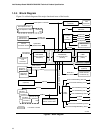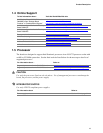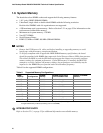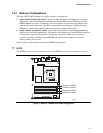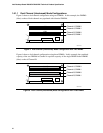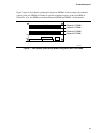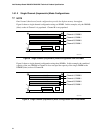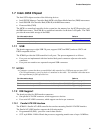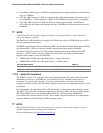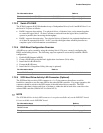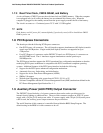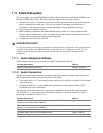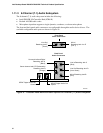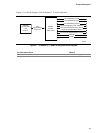
Intel Desktop Board D925XCV/D925XBC Technical Product Specification
• Ultra DMA: DMA protocol on IDE bus supporting host and target throttling and transfer rates
of up to 33 MB/sec.
• ATA-66: DMA protocol on IDE bus supporting host and target throttling and transfer rates of
up to 66 MB/sec. ATA-66 protocol is similar to Ultra DMA and is device driver compatible.
• ATA-100: DMA protocol on IDE bus allows host and target throttling. The ICH6-R’s
ATA-100 logic can achieve read transfer rates up to 100 MB/sec and write transfer rates up to
88 MB/sec.
✏ NOTE
ATA-66 and ATA-100 are faster timings and require a specialized cable to reduce reflections,
noise, and inductive coupling.
The Parallel ATA IDE interface also supports ATAPI devices (such as CD-ROM drives) and ATA
devices using the transfer modes.
The BIOS supports Logical Block Addressing (LBA) and Extended Cylinder Head Sector (ECHS)
translation modes. The drive reports the transfer rate and translation mode to the BIOS.
The boards support Laser Servo (LS-120) diskette technology through the Parallel ATA IDE
interfaces. An LS-120 drive can be configured as a boot device by setting the BIOS Setup
program’s Boot menu to one of the following:
• ARMD-FDD (ATAPI removable media device – floppy disk drive)
• ARMD-HDD (ATAPI removable media device – hard disk drive)
For information about Refer to
The location of the Parallel ATA IDE connector on the D925XCV board Figure 21, page 68
The location of the Parallel ATA IDE connector on the D925XBC board Figure 22, page 70
1.7.2.2 Serial ATA Interfaces
The ICH6-R’s Serial ATA controller offers four independent Serial ATA ports with a theoretical
maximum transfer rate of 150 MB/s per port. One device can be installed on each port for a
maximum of four Serial ATA devices. A point-to-point interface is used for host to device
connections, unlike Parallel ATA IDE which supports a master/slave configuration and two devices
per channel.
For compatibility, the underlying Serial ATA functionality is transparent to the operating system.
The Serial ATA controller can operate in both legacy and native modes. In legacy mode, standard
IDE I/O and IRQ resources are assigned (IRQ 14 and 15). In Native mode, standard PCI
Conventional bus resource steering is used. Native mode is the preferred mode for configurations
using the Windows XP and Windows 2000 operating systems.
✏
NOTE
Many Serial ATA drives use new low-voltage power connectors and require adaptors or power
supplies equipped with low-voltage power connectors.
For more information, see: http://www.serialata.org/
26



